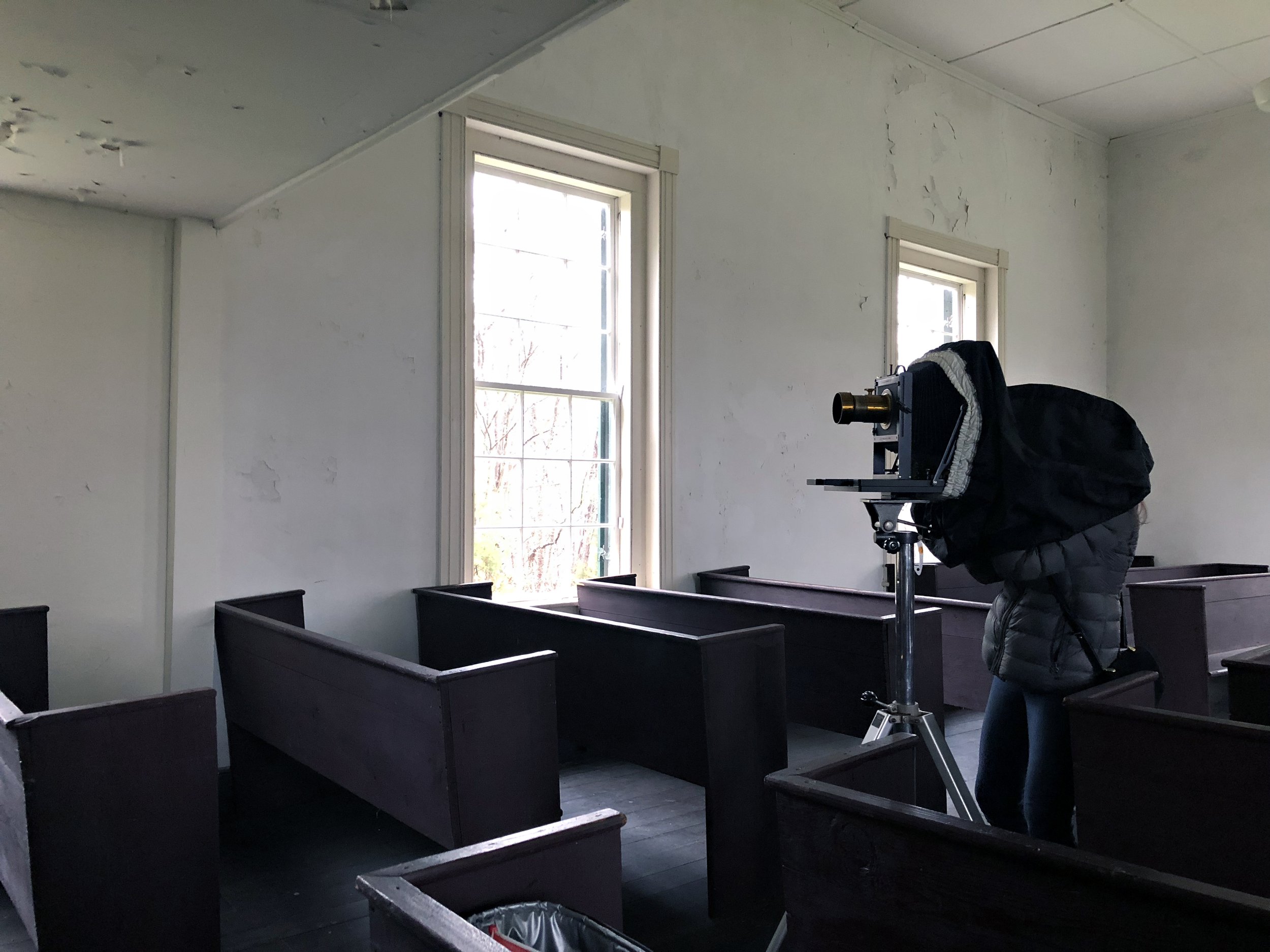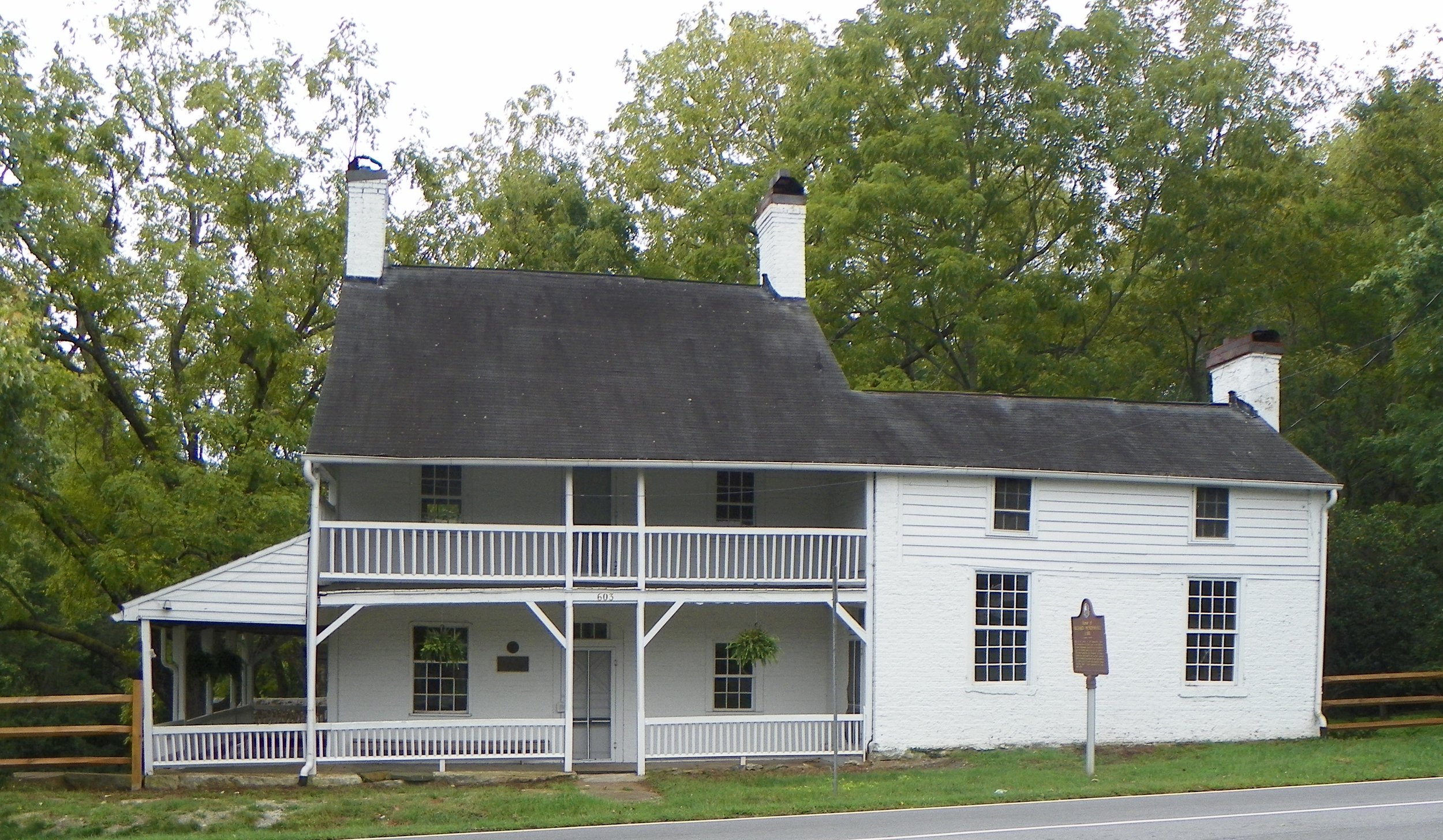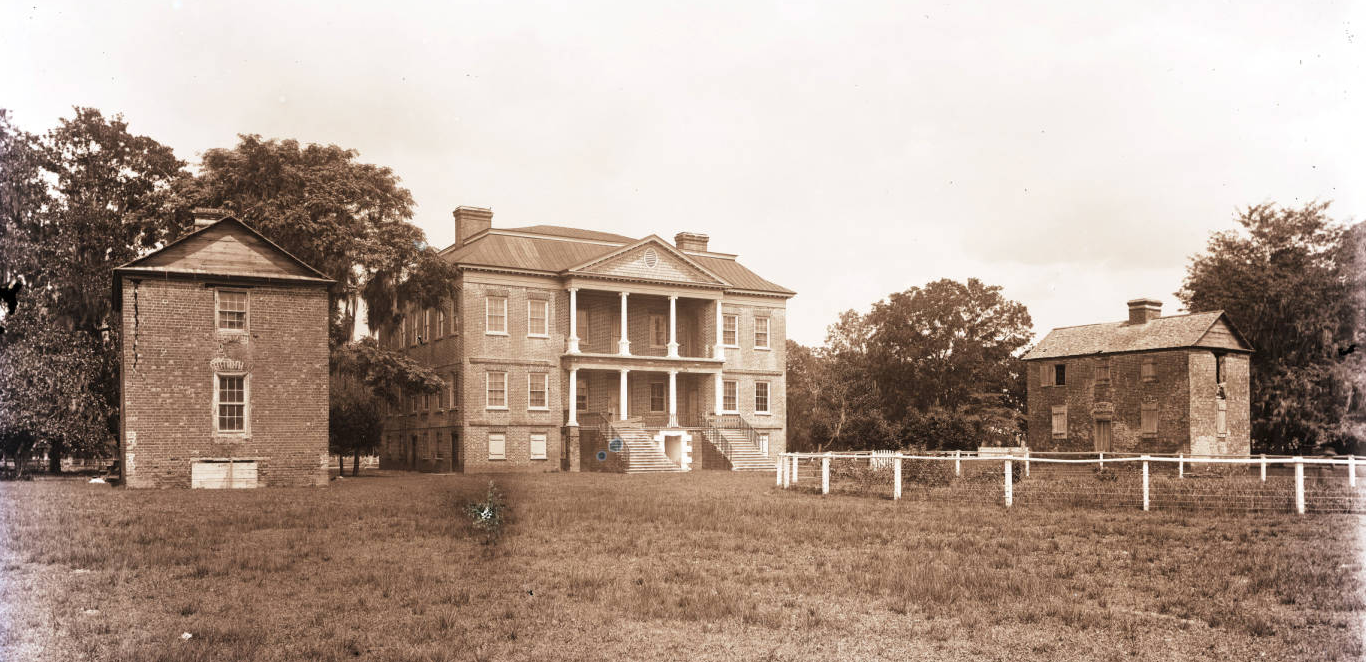“You can’t understand most of the important things from a distance, Bryan. You have to get close.”
– Bryan Stevenson (quoting his grandmother), author of Just Mercy : A Story of Justice and Redemption and founder of the Legacy Museum
WAS BLIND, BUT NOW I SEE
The line “Was blind, but now I see” is from the song Amazing Grace, the well-known anthem of the Civil Rights Movement. Its original text was written in 1773 by John Newton, a former captain of a slave ship.
For twenty years, William Wilberforce headed the campaign to end slavery and helped pass the British Slave Trade Act of 1807. It is said that he was inspired by John Newton.
Providence Presbyterian Church, Charlotte, North Carolina. Photograph by Alexius Horatius.
PROVIDENCE PRESBYTERIAN CHURCH
Charlotte, North Carolina
Founded in 1767, Providence Presbyterian Church is a small historic church located on the outskirts of Charlotte that still holds services after over 250 years. The property feels untouched by the ever-changing landscape around it, despite the expansion of roads twisting close by. In the balcony of this church, I recognized that I was sitting where the enslaved had sat over 150 years earlier.
Machpelah Church, Iron Station, North Carolina
MACHPELAH CHURCH
Iron Station, North Carolina
Machpelah Church is a small Greek Revival church that was built in 1848 and has not changed in the last 170 years. Stepping inside is like stepping back in time, seeing and feeling the presence of many layers of history.
Levi and Catherine Coffin, photograph taken on the Underground Railroad, New Garden Woods, Greensboro, North Carolina.
UNDERGROUND RAILROAD
Greensboro, North Carolina
Located in Greensboro, North Carolina, this area of the Underground Railroad is called the New Garden Woods and dates from 1819 to 1852. It is now a two-hundred-acre refuge and part of the Guilford College campus. There is a poplar tree along this path that has existed since the 1700s.
During my first visit here, I learned that my husband’s family is related to its founder and leader, the abolitionist Levi Coffin.
“The thought rose in my mind – ‘How terribly we should feel if father were taken away from us.’”
– Levi Coffin
From Hege Library reference material, Guilford College, Greensboro, North Carolina:
Levi Coffin, the “reputed President of the Underground Railroad,” dates his “conversion to Abolitionism from an incident which occurred when [he] was about seven years old.” There was a coffle of slaves (chained together in couples) who passed by on the Salisbury road. Levi and his father observed and spoke to them. They learned that the slaves were very unhappy because “They have taken us away from our wives and children, and they chain us lest we should make our escape and go back to them.” Levi asked many questions of his father and learned about “the meaning of slavery, and, as I listened, the thought rose in my mind—‘How terribly we should feel if father were taken away from us.’” This, he said, was the beginning of his being in sympathy with the oppressed.
“…the URR was built, constructed, or marked, as we may call it, by driving nails in trees, fences, and stumps.
From Guilford College reference material, Greensboro, North Carolina:
From the starting point in NC to the great turnpike in VA the URR was built, constructed, or marked, as we may call it, by driving nails in trees, fences, and stumps. Where there was a fork in the road there was a nail driven in a tree three and half feet from the ground half way round from front to back, if the right hand road was to be taken the nail was driven on the right hand side, if the left was the road the nail was to the left. If there were fences and no tree, the nail was driven in the middle of the second rail from the top, over on the inside of the fence, to the right, or left as in the trees, if neither tree, nor fence was near then a stake, or a stone was so set as to be unseen by day, but found at night.
Mendenhall Homeplace, Jamestown, North Carolina
MENDENHALL HOMEPLACE, CIRCA 1811
Jamestown, North Carolina
The Mendenhall Homeplace (built circa 1811) is a Quaker home whose residents historically defended individual freedoms. Today, it stands as a representation of the houses where many Quakers lived and worked in a community that actively opposed slavery, supported universal education, and worked to create opportunities for hope and inclusion during difficult times.
At this home, I held shackles for the first time. I was struck by their weight, the burden of the history they carried. They were made of immensely thick and coarse iron, and the idea of such a dehumanizing restraint felt unfathomable to me. I tried to photograph them and found there wasn’t a way to convey their weight or horror.
This was also where I photographed a wagon with a false bottom. Underneath its carriage was a hidden compartment capable of hiding individuals traveling on the Underground Railroad. Again, my photographs did not convey the emotion embedded within the object that they pictured.
UNDERGROUND RAILROAD HOME
Jamestown, North Carolina
I went looking for another important Quaker home. This one had been moved from its original foundation at a point along the Underground Railroad. After doing some research, I located it deep in the nearby forest. It was almost inaccessible and collapsing in woods so dense there was barely room for my camera. What had been a symbol of hope had become a symbol of neglect.
McLeod Plantation, John McWilliams, photographer
McLEOD PLANTATION
Johns Island, South Carolina
The McLeod Plantation was the first plantation that I visited. Standing on the property, I felt an overwhelming sense of remorse as I encountered this relic of our country’s past.
The Charleston County Parks web page traces the history of McLeod Plantation as follows:
“Transition Row,” featuring six houses built for the enslaved at McLeod, was home to generations of African Americans from the late 1700s through the 1980s. The 55th Massachusetts Volunteer Infantry, a regiment made up of free African Americans, was quartered in these houses as well. Immediately following the war, the main house served as a regional office for the Freedmen’s Bureau and the row of small houses provided homes to freedmen and their families.
Magnolia Plantation, located on the Ashley River, Charleston, South Carolina
MAGNOLIA PLANTATION
Charleston, South Carolina
Established in 1676, Magnolia Plantation is known for its beautiful gardens, which were built by enslaved people over the course of two centuries. Here, I met the Slave Dwelling Project founder, Joseph McGill, for the first time. I had reached out to him years earlier in support of his project and was honored to finally meet him. Joseph’s work allows visitors to connect to this past by remembering and honoring those who were enslaved.
Drayton Hall, George LaGrange Cook, photographer, C1890
DRAYTON HALL
South Carolina
Drayton Hall, constructed by white and enslaved craftspeople, was not a working plantation. Instead, it served as the commercial center for the seventy-six thousand acres owned by the Drayton family.
With over one million artifacts to date, Drayton Hall is an active archaeological site. On the first day I visited, I did not have permission to photograph, but was allowed to peer through the window of the basement, where I could see the in-progress excavation of a room. Moss was growing on the site. This new growth became symbolic for me, so for the first time, when I returned, I brought color film.
On my return, I photographed the basement where the enslaved had lived as servants for the home. I tried to capture the small shafts of light, which didn’t adequately illuminate this somber space. I also photographed columns from the original plantation house that had been moved to the basement in 1815. The display of columns that had been laid to rest, no longer holding up the plantation façade, served as a metaphor for the disappearance of these historic sites.
Middleton Place, Ruins of the main house, Staib, Photographer
MIDDLETON PLACE
South Carolina
In February 1865, near the end of the war, Union troops on Sherman’s March to the Sea captured Middleton Plantation and burned the main house.
Hobcaw Barony, Friendfield Church, South Carolina, Gottscho-Schleisner, Inc., Photographer
HOBCAW BARONY
South Carolina
The Waccamaw Indian Tribe called this area Hobcaw, which means “between the rivers.” In 1718, the land became a colonial land grant and was subdivided into a dozen rice plantations. Hobcaw is currently a sixteen-thousand-acre nature and research reserve.
Mendenhall-Blair House, photographing the window in the secret room, High Point, North Carolina
MENDENHALL- BLAIR HOME
Underground Railroad
High Point, North Carolina
The Mendenhall-Blair House was built just before the Civil War and then designated an official historic landmark in 1993. However, that designation doesn’t offer it protection from commercial development. Advocates for the building’s preservation have been able to delay demolition under North Carolina law, but it can’t be fully protected. This photograph shows the secret room above the kitchen where the Mendenhalls, prominent Quakers, offered their home as a safe haven for those who were enslaved. I reached out to Preservation Greensboro, whose staff connected me to the current owners of the house. They granted me access.
Ossabaw Island, Georgia
OSSABAW ISLAND
Georgia
This undeveloped ten-mile barrier island off the coast of Georgia is accessible only by boat and the island can only be visited by application.
Slave labor was introduced here in 1763. Indigo, cotton, and rice were the main crops cultivated on the island, which was home to four plantations at one time. Three homes made of tabby concrete (crushed oyster shells mixed with lime) that remain have been restored by a Save America’s Treasures grant.
The road above is the oldest and longest dirt road still in use in America and cuts through the center of this undeveloped island.
OLD SHELDON CHURCH RUINS
Beaufort County, South Carolina
Sheldon Church was burned by the British in 1779 during the Revolutionary War and rebuilt in 1826, then burned again during the Civil War in 1865 during General Sherman’s March to the Sea. The ruins remain as a visible reminder of its violent past.
A view through the lens under a dark cloth. Taken with an 8″ x 10″ camera, the image appears upside down on the ground glass.
Photographing the excavations at Drayton Hall, Charleston, South Carolina.











